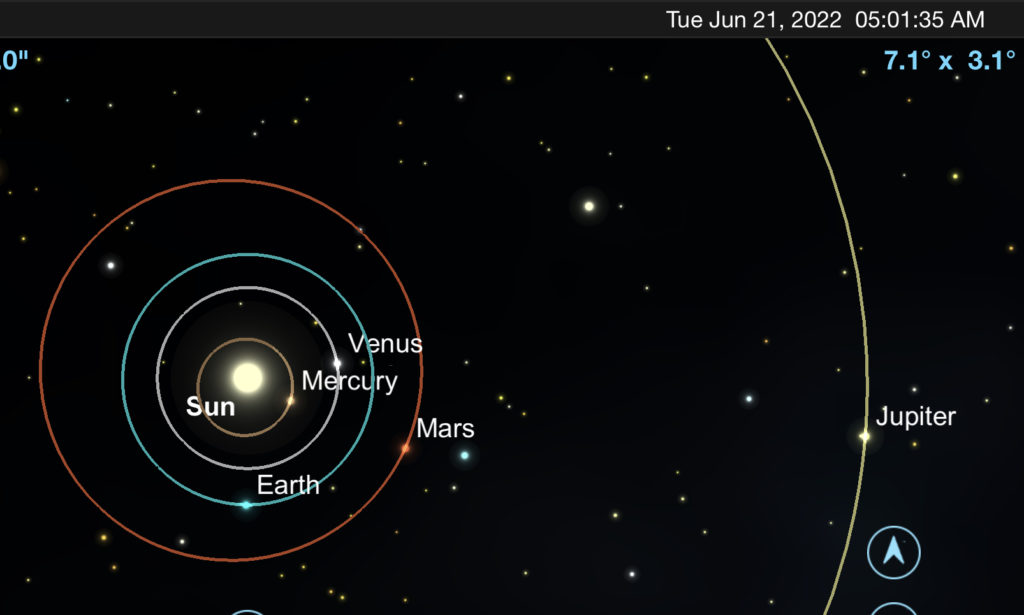Planets and the moon aligned and visible low in the sky June 21-24
The short version: from now through the end of the month, all the naked eye planets will be within 105º of each other in the pre-dawn sky. Uranus and Neptune are also in the group, but require binoculars or a telescope to see. The Moon joins them June 18 – 27.
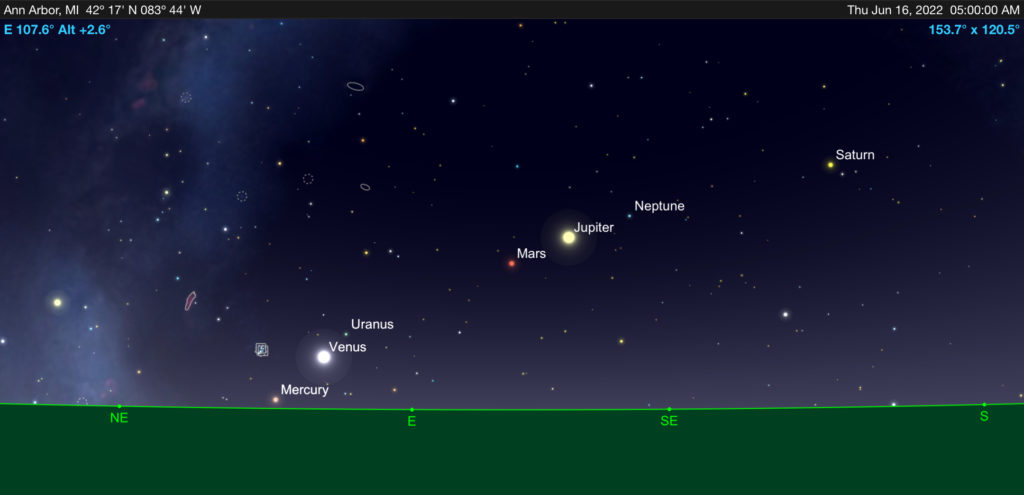
Hard-to-spot Mercury reaches its greatest eastern elongation in the morning twilight of June 16, peeking above the horizon around 5 AM Ann Arbor time [see June16.jpeg]. At around magnitude +1, you’ll want binoculars to help you pick it out. It moves northward on its way toward conjunction, making it brighter and easier to see in the pre-dawn twilight, before disappearing into the Sun’s glare at the beginning of July. Use bright Venus to guide you to it.
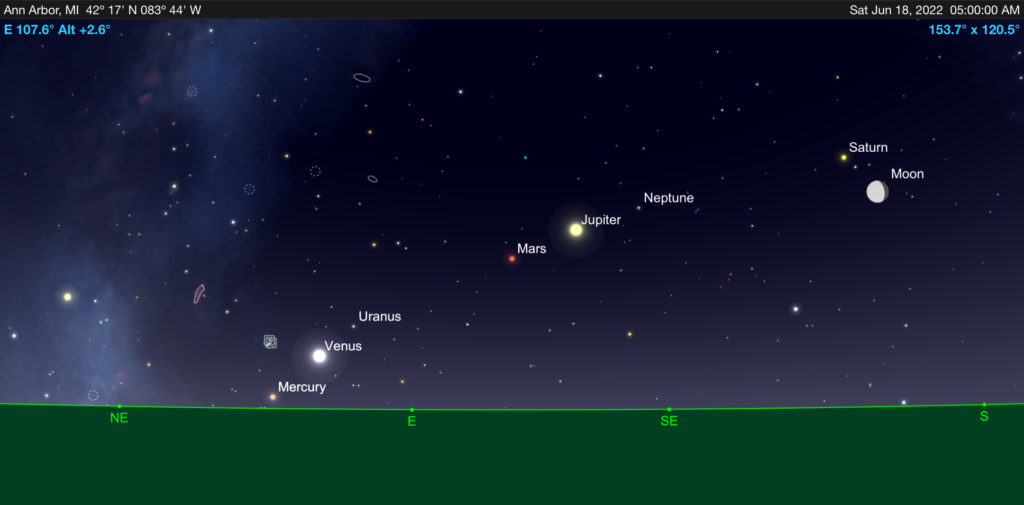
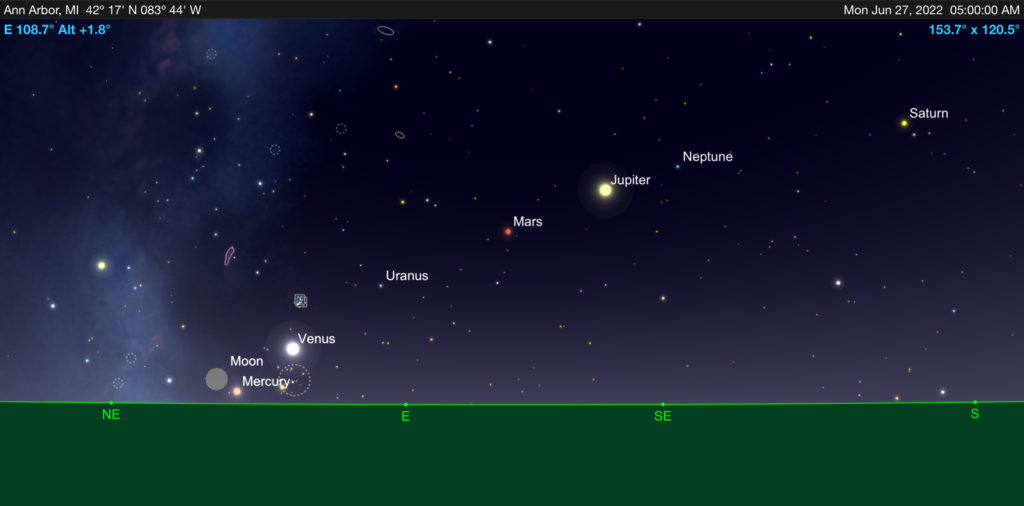
The Moon joins the group on June 18 [June18.jpeg]. At just four days past full, it will nearly swamp Saturn. But the real challenge will come on June 27. Use binoculars and Venus to guide you to Mercury and an old Moon on the ENE horizon [June27.jpeg].
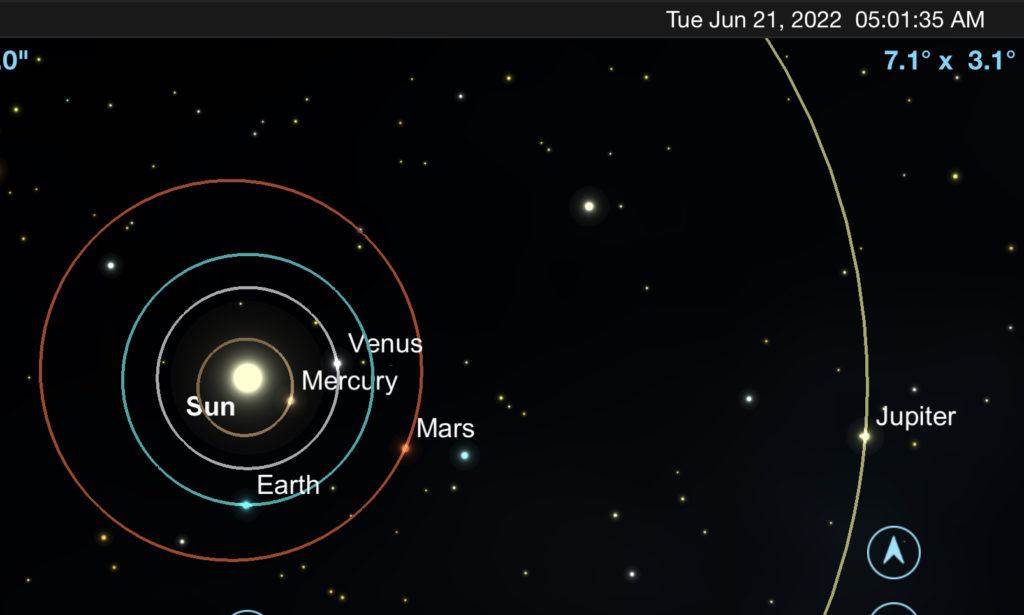
Astronomers can map the path the Sun follows against the background of stars as a line called the ecliptic. All the major planets in the Solar System orbit close to the plane defined by that line, so they always appear close to it. They also all travel at different speeds, so sometimes they all end up on the same side of the Sun [orbits21June22.jpeg]. When that happens, they all line up near the ecliptic and near each other, making them all visible around the same time of day.
Having three or four of the planets lined up and in view at the same time is fairly common. Jupiter, Saturn, Uranus and Neptune move fairly slowly, so they’ll remain in the same area of the sky for a few more years. Mars joins the group every 1.5 – 2 years. Mercury and Venus go zipping through the sky though, so adding both of them to the group is fairly rare. In fact, next January all the planets except Mercury will be grouped in the evening skies, but you’ll have to wait four years if you want all of them together again.
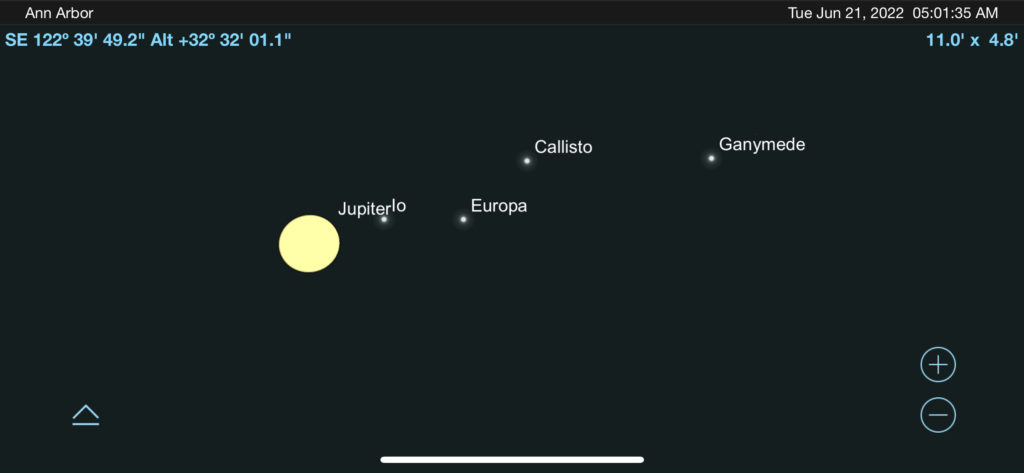
If you have binoculars or a small telescope, be sure to point at Jupiter. It’s four brightest moons, Io, Europa, Ganymede and Callisto, are like a mini solar system. On June 21, they’ll all be lined up in a row, but if you look a couple of hours earlier, or on another day, Io and maybe Europa will be in completely different spots, but again, they’re all pretty close to the same plane, so they often appear to be lined up.
Links:

